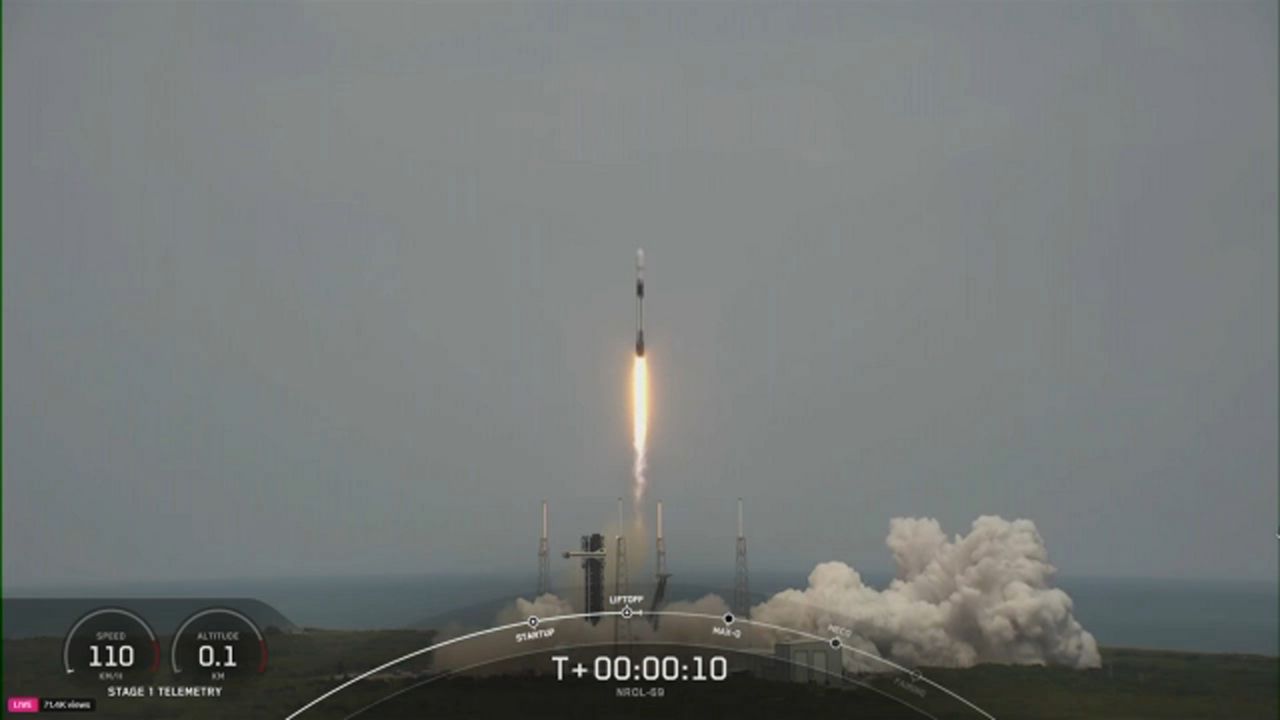CAPE CANAVERAL SPACE FORCE STATION — Despite weather being a concern, SpaceX sent up more than 50 Starlink satellites on Wednesday afternoon.
What You Need To Know
- Falcon 9 rocket sent up 56 Starlink satellites to low-Earth orbit
- 🔻Scroll down to watch the launch🔻
Liftoff! pic.twitter.com/92i7ApdDfz
— SpaceX (@SpaceX) March 29, 2023
At 4:01 p.m. EDT, the company’s Falcon 9 rocket sent 56 Starlink satellites from Space Launch Complex 40 at Cape Canaveral Space Force Station to low-Earth orbit.
There was some concern about the weather. For Wednesday’s liftoff, the 45th Weather Squadron gave a 60% chance of good launch weather, but there are two concerns.
“… the main concern for the primary launch window will be the Thick Cloud Layers rule, followed by Liftoff Winds as a distant second,” stated the agency on Tuesday.
NASA has a launch weather criteria for the Falcon 9 rocket.
The first-stage booster, B1077, that was used for the Starlink Group 5-10 mission has had three missions before Wednesday’s.
After the stage separation, the Falcon 9 rocket landed on the droneship Just Read the Instructions that is out in the Atlantic Ocean. It was B1077's fourth trip to space.
Falcon 9’s first stage has landed on the Just Read the Instructions droneship pic.twitter.com/BeO1VrgvOe
— SpaceX (@SpaceX) March 29, 2023
About the mission
The Starlink satellites provide internet access to most parts of the little round Earth, stated the company that is operated by SpaceX.
Before Wednesday afternoon's launch, astronomer Jonathan McDowell of the Harvard-Smithsonian Center for Astrophysics recorded the following information on the current Starlink satellites: 3,858 are in orbit, with 3,811 in working order and 3,284 that are operational.








